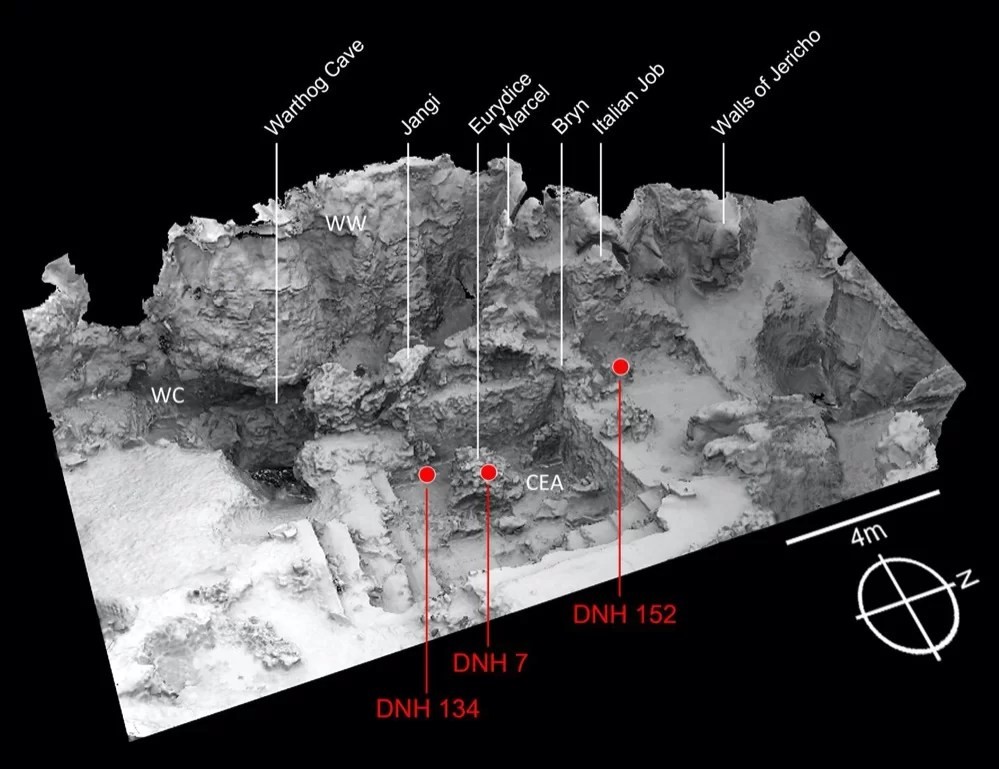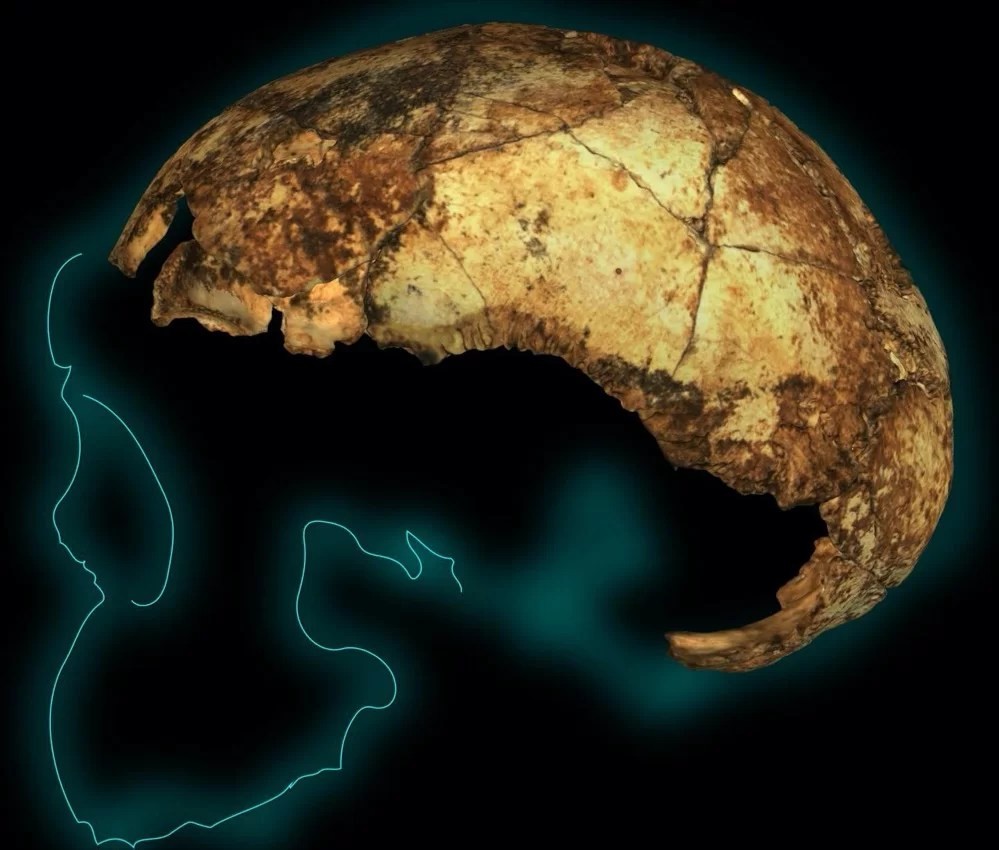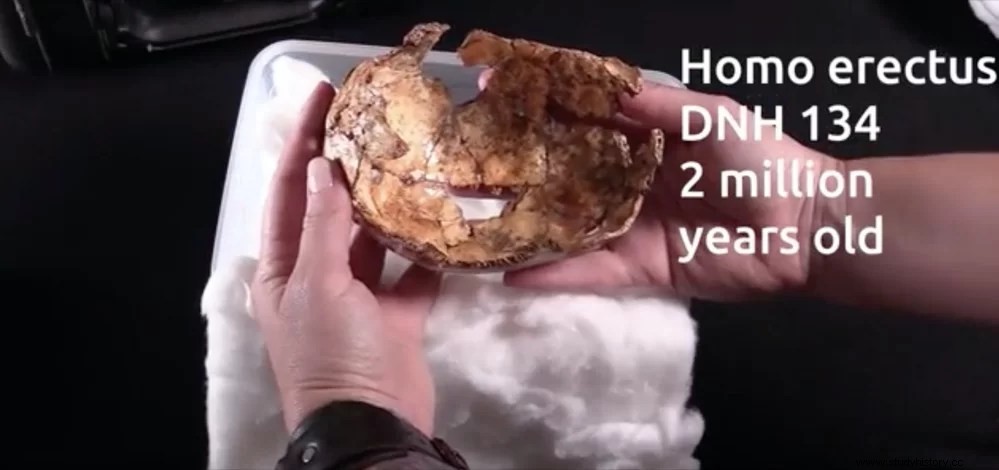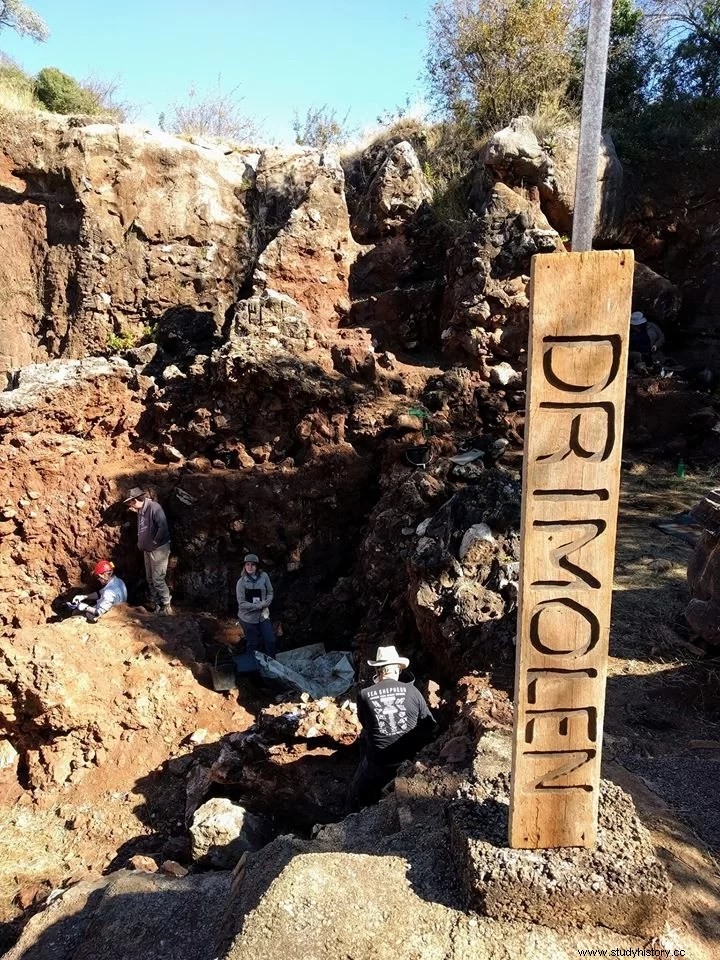An international team including researchers from the University of Arizona and the University of Johannesburg has found the oldest known skull of Homo erectus , the first of our ancestors to be almost human in its anatomy and aspects of its behavior.
Years of meticulous excavation at the fossil-rich site of Drimolen, nestled in the Cradle of Humankind (a UNESCO World Heritage site located just 40 kilometers northwest of Johannesburg in South Africa), has resulted in the recovery of several new and important fossils. The skull, attributed to Homo erectus , has been dated at two million years old.
In an article published in Science , the team of nearly 30 scientists from five countries share details of this skull – the oldest known fossil of Homo erectus – and other fossils from Drimolen and discuss how these new finds are forcing us to rewrite part of our species' evolutionary history.

High-resolution dating of the Drimolen fossil deposits demonstrates that the age of the new skull predates the Homo erectus specimens from other sites within and outside Africa for at least 100,000 to 200,000 years, thus confirming the African origin of the species.
The skull, reconstructed from more than 150 separate fragments, is from an individual who was likely between three and six years old, giving scientists a rare glimpse into childhood growth and development in these early human ancestors.
Other fossils recovered from Drimolen belong to a different species – in fact, to an entirely different genus of ancient humans – the stockier and heavier-built human ancestor, Paranthropus robustus , of which it is known that they are also found in several nearby caves that preserve fossils of the same geological age. A third distinctive species, Australopithecus sediba , is known from two-million-year-old deposits from an ancient cave site near Drimolen.

Unlike the current situation, where we are the only human species, two million years ago our direct ancestor was not alone said Andy Herries, project director and principal investigator at La Trobe University in Australia.
Gary Schwartz, paleoanthropologist and research associate at the University of Arizona Institute of Human Origins, was involved in the excavations and recovery of the new skull, and as an expert in the evolution of growth and development, continues his work with the research team. to analyze the numerous infant and juvenile specimens found on the site.
What's really exciting is the discovery that during this same narrow window of time, just about two million years ago, there were three very different types of ancient human ancestors roaming the same small landscape Schwartz said. We don't yet know if they interacted directly, but their presence raises the possibility that these ancient humans developed strategies to partition the landscape and its resources in some way that allowed them to live so close together .

The ability to date the Drimolen Cave deposits to such a high degree of precision, using a range of different dating techniques, allowed the team to address important broader questions about human evolution in this region of Africa.
Paper co-author Justin Adams of Monash University, Australia, who specializes in reconstructing paleohabitats from animals preserved in fossil beds, said the discovery now allows us to address the role that habitat changes , resources and unique biological adaptations of Homo erectus , may have played in the eventual extinction of Australopithecus sediba in South Africa.

The discovery of the first Homo erectus marks a milestone in the South African fossil heritage said Stephanie Baker, co-director of the project and a doctoral student at the University of Johannesburg.
Fieldwork will continue at Drimolen, expanding excavations to include even older components of the cave and to provide deeper insights into the forces shaping human evolution in this part of the African continent.
